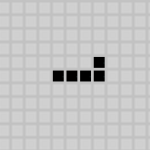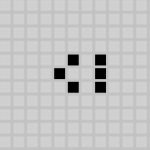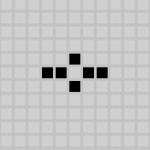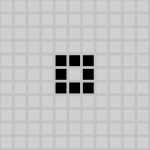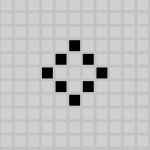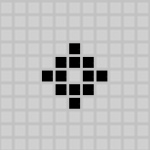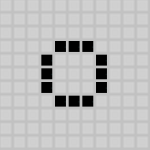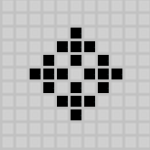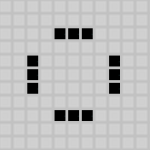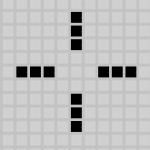The Game of Life
As I have written about before, I have always been interested in numbers and mathematics. Although my formal studies of the subject have not gone beyond the courses that I needed to attend for a science degree, my fascination with the beauty of mathematics and numbers has been life long. I have found, on a number of occasions, that I encounter a simple idea or set of rules, then find that, years later, it is still easy to bring to mind. This is a contrast to my memory for many everyday things – names, phone numbers, dates … – where is am very forgetful.
I clearly recall a visit from a friend one evening in the late 1970s …
I was a student at university and my friend was aware of my interest in puzzles and mathematical oddities and shared that interest himself. So he brought along a magazine article about a “game” that he had not previously encountered. The game was simply called “Life”. I would later learn that its full name: Conway’s Game of Life. It is named after its inventor, John Conway, who had come up with the idea about a decade before I heard about it.
Like so many fascinating things, the idea of the game is incredibly simple. The game takes place in a notionally infinite square matrix of cells. At any one time, a cell is either alive or dead, so there is a clear pattern of live cells. The game takes place as a sequence of cycles, when some specific rules are applied to all the cells simultaneously, which determine their state after the cycle. These rules appertain to the 8 immediate neighbors of each cell:
- if a live cell has 2 or 3 live neighbors, it continues to live; otherwise it dies
- if a dead cell has exactly 3 live neighbors, it comes alive; otherwise it remains dead
That is it.
To play the game, you simply define a starting pattern and start running the cycles. Most smaller patterns die out after a few cycles or reach a fully stable state – either fixed or alternating between 2 states. Here is an example, which reached a stable [alternating] state after 9 cycles:
The game gets really interesting when patterns behave in more complex ways. My example above is curious, IMHO, as it starts off asymmetric, then acquires symmetry in each dimension after a couple of cycles; later it becomes fully symmetric. Other patterns do many odd things. Perhaps they disassemble and reappear a few cells across the matrix. In some extreme cases, small shapes are ejected periodically from a larger one.
When my friend and I started out playing the game, we just used squared paper and ran the rules “by hand”. I soon realized that I could apply my hobby to the problem and write a computer program to do the work for us. And that is what I did. It was written in Fortran and ran on a DEC PDP11/03, which was the only computer that I had access to with a VDU screen. My “universe” was 80 cells horizontally and 25 vertically. Anybody with a long memory, who used one of the VT series terminals may be able to guess why I had this size.
Nowadays I have one of the numerous Life apps on my iPad and I still find it fascinating as these simple rules sometimes produce such a complex and unpredictable result …
